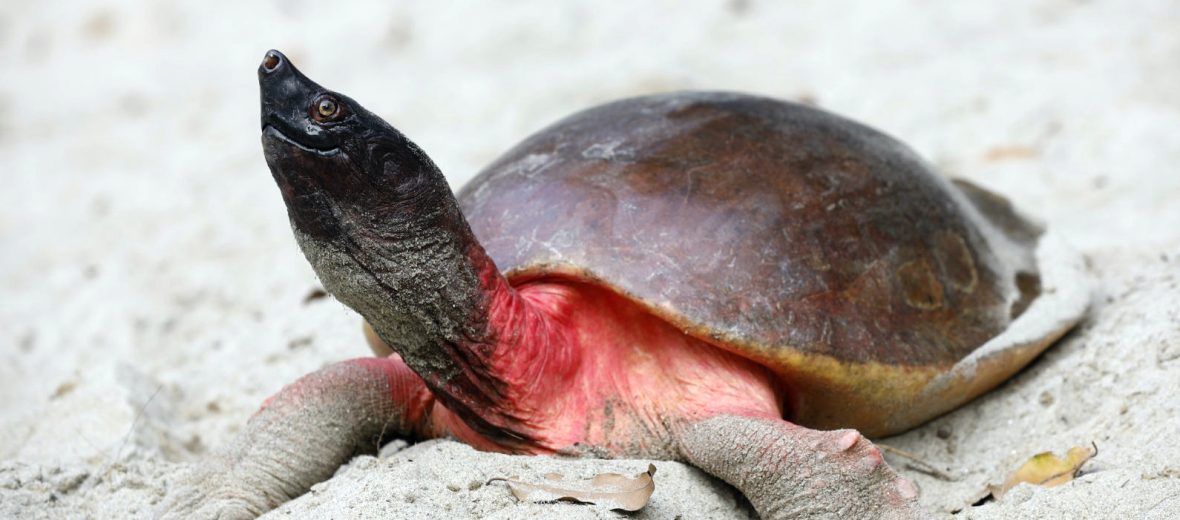
The northern river terrapin, aka tuntung, only remains in India, Myanmar, and Bangladesh. They are extinct from their other locales. These aquatic turtles prefer large rivers, tidal areas in estuaries, and mangrove forests. Unfortunately, their time on this planet is closing in on them as there were only an estimated 100 wild individuals remaining as of 2018. They are listed as Critically Endangered by the IUCN. These turtles are considered among the most endangered turtles in the world. The northern river terrapin faces many threats such as habitat loss and destruction at the hands of residential and commercial developments, mining, aquaculture, shipping transportation, and dams; over collection; hunting; overfishing; and climate change.
First the Stats…
Scientific name: Batagur baska
Weight: Up to 39.68 lbs.
Length: Up to 23.62 inches
Lifespan: Up to 25 years
Now on to the Facts!
1.) The northern river terrapin is among the largest known freshwater turtle in Asia.
2.) These turtles are diurnal (active during the day).
3.) They are predominantly aquatic and typically only venture onto land to lay their eggs.
4.) Northern river terrapins are also capable of lengthy migrations of up to 60 miles.
5.) Being social, they can be found conglomerating in various sized creeps to sun themselves.
But wait, there’s more on the northern river terrapin!
6.) A group of turtles is called a bale, creep, dole, nest, or turn.
7.) At night they retreat to low tide mud flats or burrows.
Did you know…?
It is not unheard of to find communal nests with clutches of eggs from several females.
8.) Their diet consists of clams, crustaceans, insects, and water plants.
9.) Breeding season takes place between December and March.
10.) Females lay upwards of 3 clutches of up to 34 eggs each breeding season.
But wait, there’s still more on the northern river terrapin!
11.) Eggs hatch in up to 80 days. The hatching time is dependent upon the surrounding temperatures.
12.) The hatchling turtles are born precocial (totally self sufficient).
Now a Short Northern River Terrapin Video!
Be sure to share & comment below! Also, check out the Critter Science YouTube channel. Videos added regularly!
Want to suggest a critter for me to write about? Let me know here.
Some source material acquired from: Wikipedia & IUCN
Photo credit: Reverse the Red



